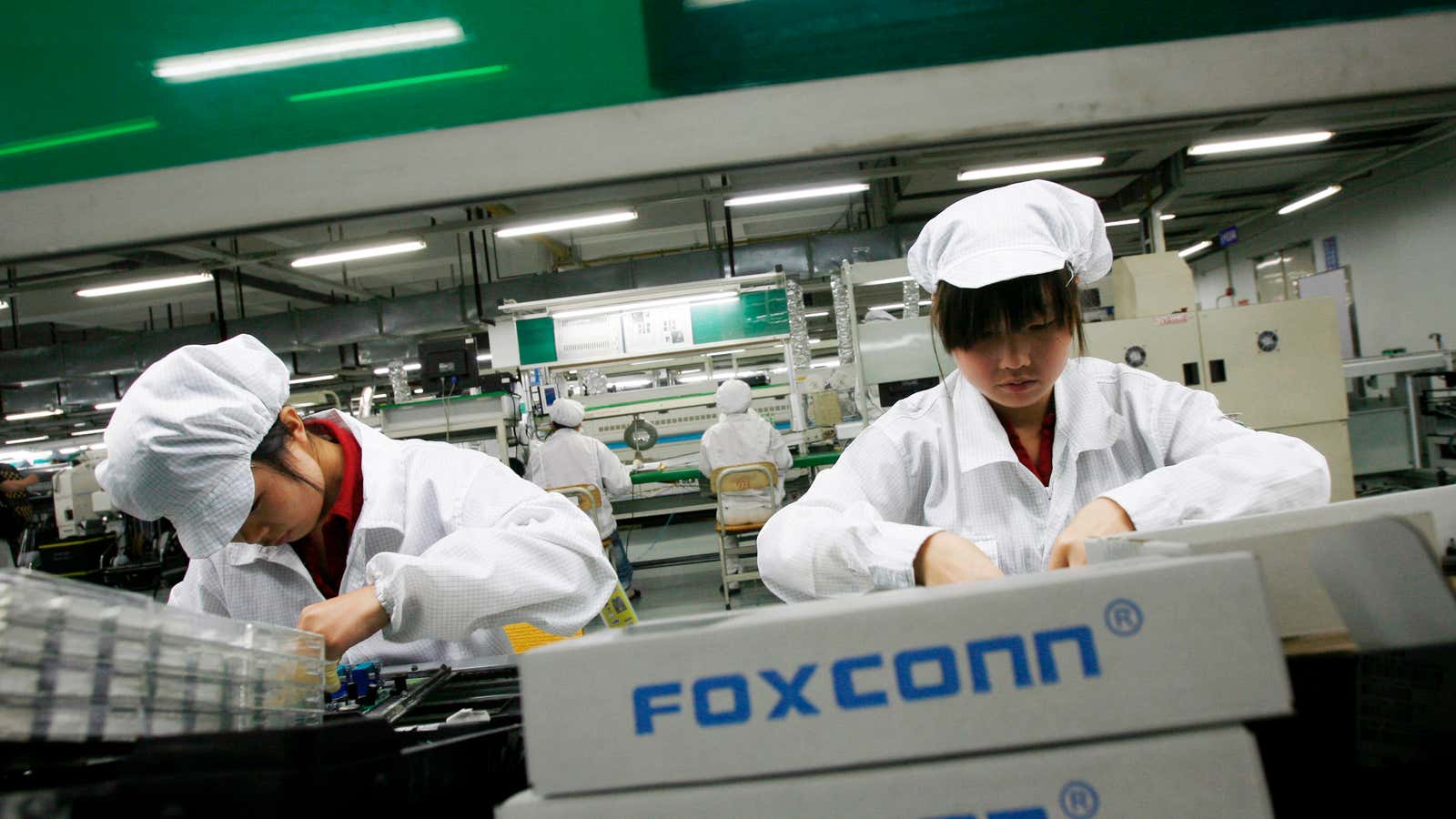You don’t need Donald Trump to tell you that Apple refuses to manufacture its iPhone in the United States—the late Steve Jobs even told US president Barack Obama personally that it couldn’t be done.
Indeed, it would be awfully difficult for Apple to replicate, on US soil, the massive factories of Shenzhen, China, where the phones are assembled at high speed by thousands of dorm-living workers earning $300 to $400 a month.
But researchers peeking into the globe-spanning supply chain have come to something of a different conclusion about Apple’s relationship with China. Most of the phones are assembled there, but according to their 2015 examination of Apple’s supplier networks, the bulk of the iPhone’s critical components are made by non-Chinese companies.
“The findings show that to date, Apple has been reluctant to involve many Chinese companies in its supply chain, with the majority of suppliers, even many of those located in China itself, being foreign companies,” write the authors, Seamus Grimes, an economic geographer at the National University of Ireland, and Yutao Sun, an economist at Dalian University of Technology.
To the charts! Here we can see the countries of origin for the 759 different company subsidiaries Apple hires to build the iPhone:
Of course, many of the non-Chinese suppliers Apple deals with have opened subsidiaries in China. For example, Foxconn, the infamous maker of many Apple products, is a Taiwanese company. The researchers examined how many of Apple’s supply chain contractors operated facilities in China. It’s still less than half of the total companies behind the iPhone.
The bulk of the phones’ assembly takes place in China, though. And that kind of outsourcing, which takes advantage of cheap labor, is a major flash point in discussions of the changing global economy.
But wealthier countries still dominate the advanced components that make the phone function. The researchers note that Apple relies on US chipmakers like AMD, Analog Devices, Broadcom, Fairchild Semiconductor, Intel, Nvidia, Skyworks, and Texas Instruments.
This bifurcation—with US companies on the high-end of the value chain profiting as routine manufacturing jobs move overseas chasing cheaper wages—helps explain many of the trends in the US economy.
There are optimists who look at this data and see opportunity for the US to bring some smaller share of the manufacturing jobs back home with the help of automation. A robot-assisted productivity boost, by these lights, would let the US make up for wage disparities and capture more value from manufacturing high-tech products.
